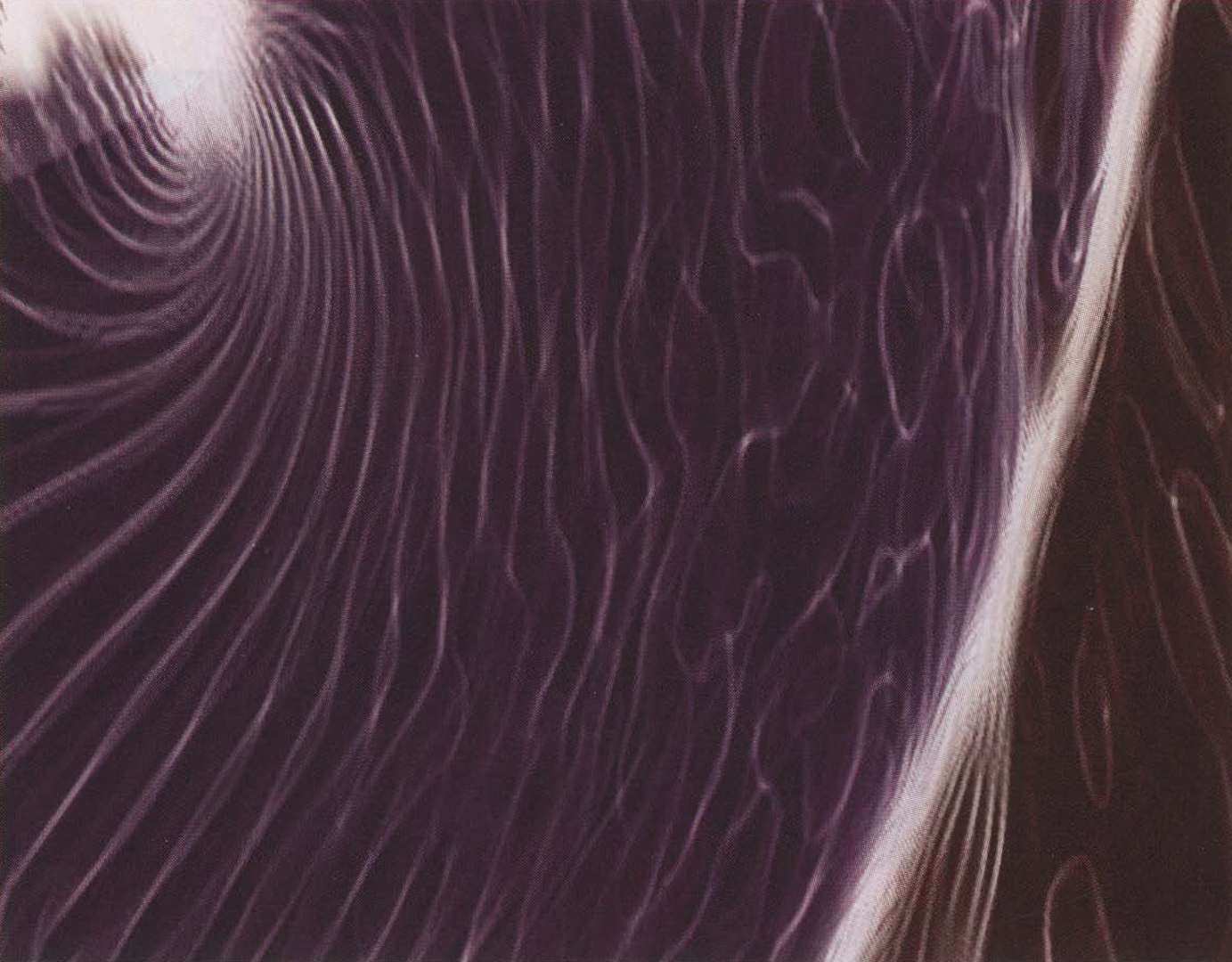Santiago Lombeyda: Art from Ephemeral Scientific Moments: “Horizonte”
Artist(s):
Title:
- Art from Ephemeral Scientific Moments: "Horizonte"
Exhibition:
Creation Year:
- 2004
Medium:
- Print on canvas
Size:
- 22 inches x 18 inches
Category:
Artist Statement:
In the classic sense, art has been characterized as any human expression that conveys a sentiment or state of mind from an artist to his or her audience. Such expression may take birth from countless basic media. However, those sources rich in intrinsic value carry over added sentiments that an artist must account for, and in most cases, will utilize to covey additional meaning. As such, it is then possible that scientific data, residing in disk drives and tape decks of supercomputers, could be just as rich and natural a source for art as a piece of marble or a set of paints have proven to be. Scientific data stored as electronic bits is seldom perceived with an artistic and critical eye, and specially with a willingness to abandon and go beyond the complex numeric, scientific nature it was meant to depict. But in fact, scientific computational research offers a virgin, infinite, constantly renewing medium that, like any natural space, can be seen, explored, and photographed relying on the artist’s sensitivities to, in effect, create unique, arousing art. Beyond any intentional accuracy or even erroneous science, this medium abounds in abstract intricacies. Thus it is apt to be rediscovered and exploited as a full, rich canvas of artistic expression. Fundamentally, just as Franz Kline mastered a seemingly simple use of broad strokes into a meaningful abstract form, so can we strive to find color spaces, data subsets, particular points of view, and space decompositions to create emotional pixel collections. It is a process that could be thought of as exploring a digital scientific path across Abstract Expressionism. This art is born from delicate moments of inspection and introspection. Simple changes in a color transfer function or a tap of the mouse, changing the view point, alters the image completely. These are fragile moments of art found in a scientific space. Moments that, in most cases, go unnoticed and are often lost. As lit pixel images, or as magnetic imprints on a disk surface, they have but a limited lifespan. Horizonte is one such snapshot from a simulation of a shockwave hitting a solid wedge-like object. The angle of infraction creates internal pressure waves, which concentrate around the object’s surface folds, creating the captured composition.
Technical Information:
This image was acquired from the volume rendering of a time-step of a simulation of a shockwave propagating across a solid wedge (data courtesy of Caltech’s ASCI/ASAP Center). The data are stored as a 12-bit volume in a grid size exceeding 2000x400x400 voxels. The software utilized to create the rendering was VoV, a graphical user interface to TeraRecon’s VolumePro 1000 volume rendering card. The color-transfer function was hand created using a simple pencil line-drawing technique offered in VoV, manipulating each of the base red, green, blue, and opacity bands individually. The resulting colors and composition are direct consequences of choices made by the artist and are output directly from the volume-rendering software without any further manipulation.
Other Information:
REFERENCES/LINKS
www.cacr.caltech.edu/ASAP/
www.terarecon.com/products/volumepro _prod. html
www. cacr. caltech. edu/projects/teravoxel/results/vov





